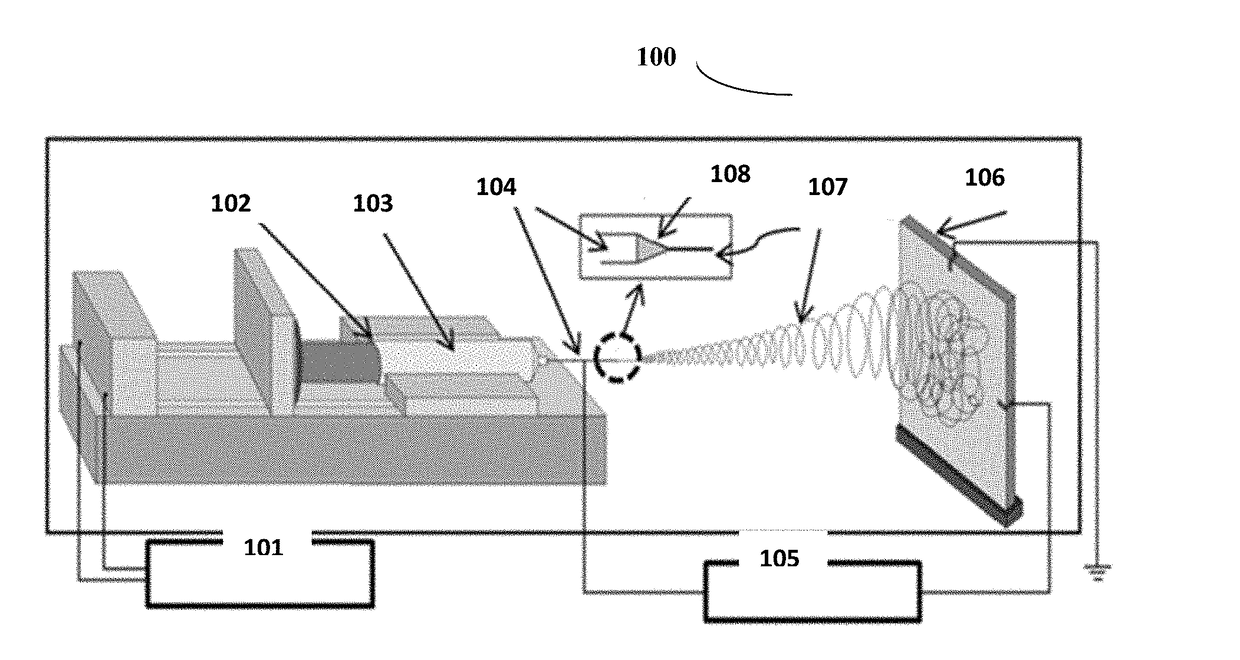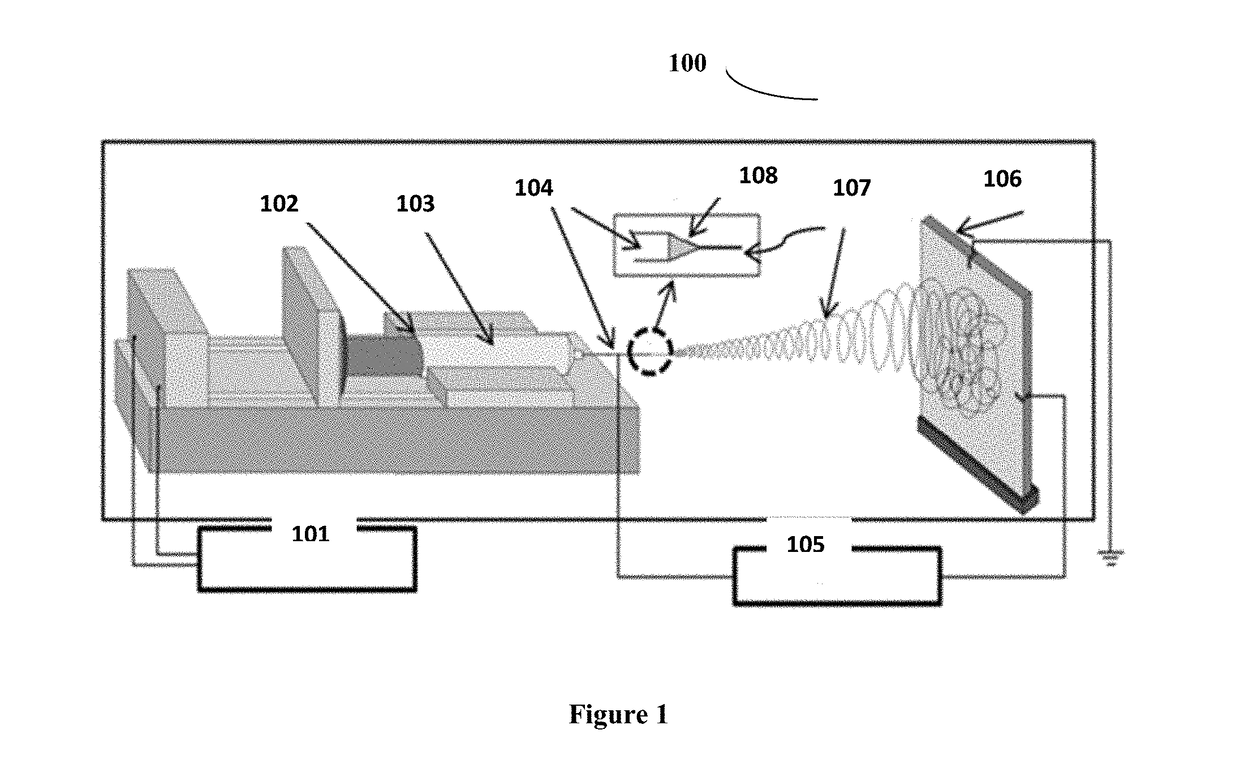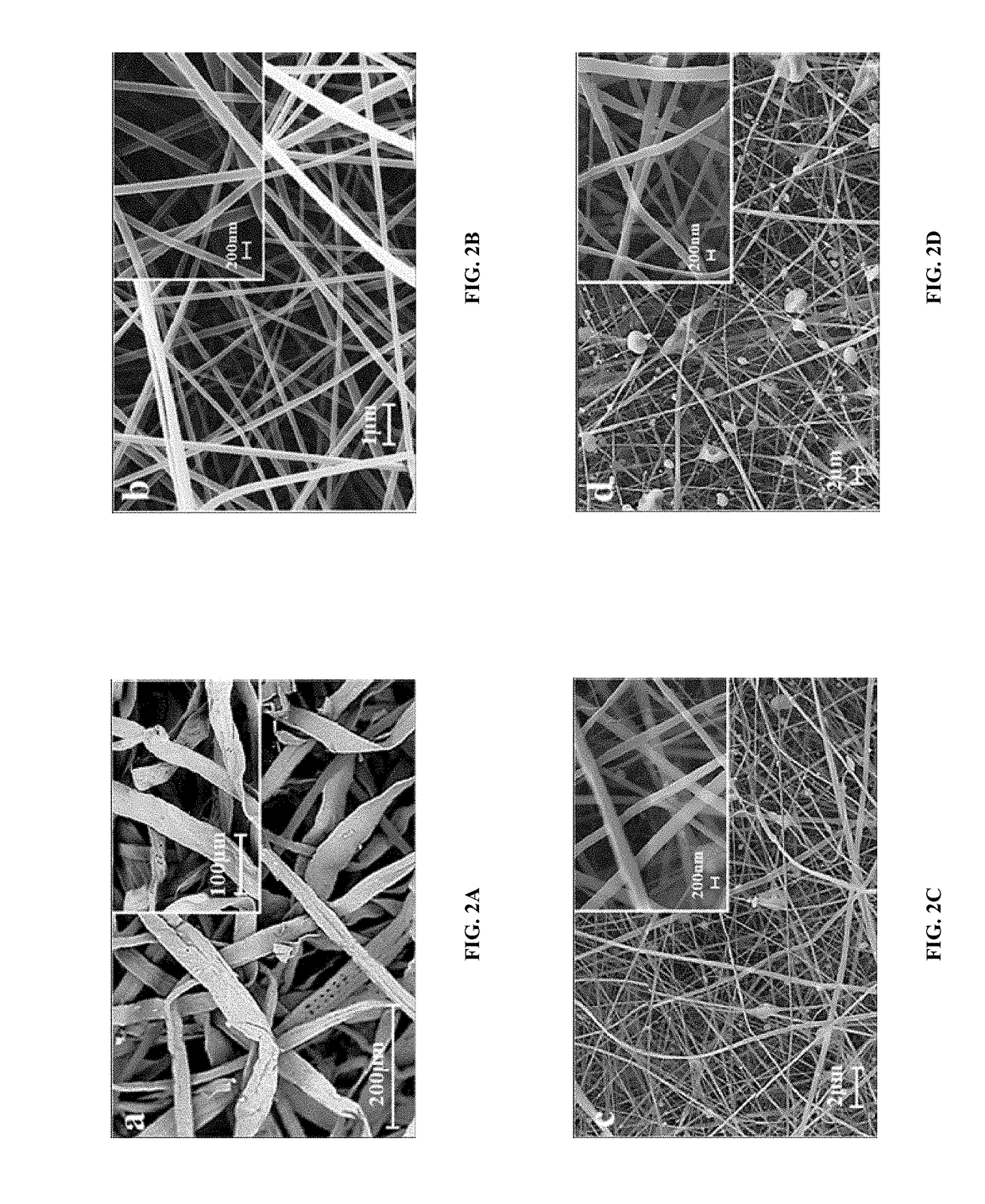Cellulose acetate based non-woven nanofiber matrix with high absorbency properties for female hygiene products
- Summary
- Abstract
- Description
- Claims
- Application Information
AI Technical Summary
Benefits of technology
Problems solved by technology
Method used
Image
Examples
example 1
Morphological Characterization
[0035]The surface morphologies of the electrospun nanofibers are observed using field emission scanning electron microscopy (FESEM) (Carl Zeiss, SUPRA 40). Electrospun nanofibers are removed from the aluminum foil and cut into small pieces of 1×1 cm2. All samples SA, SB and SC are sputtered with thin layer of gold before image analysis in FESEM in order to minimize the charge effect. For commercial products considered as reference such as samples S1 to S6 (refer Table 1), absorbent core is removed and then examined in scanning electron microscope.
[0036]Surface morphology of absorbent core of selected commercial feminine sanitary napkins is examined using SEM. A representative SEM image of these fibers for sample S1 is shown here as FIG. 2a. Feminine sanitary napkins are made up of cellulosic fibers which are found to be in flat-ribbon like shape with width of about 40-50 μm.
[0037]Electrospun CA nanofibers (SA) as shown in FIG. 2b are long, continuous, a...
example 2
Specific Surface Area (SSA) Measurement
[0038]The Brunauer-Emmett-Teller (BET) surface area of electrospun CA nanofibers with and without SPA and two different types of commercial samples (S1 and S4) is determined by N2 physisorption using Quantachrome instruments v3.01. The commercial samples for this test are selected depending on the form of SAP present in it. One for granular powder form and another for sandwich layer form of SAP. The weight of the sample is fixed to be 100 mg. All samples are degassed at 80° C. for 60 minutes in nitrogen. The SSAs are determined by a multi-point BET measurement with nitrogen as the adsorbate.
[0039]BET surface area of electrospun CA nanofibers (SA) is found to be 50.21 m2 / g which decreased to 22.14 m2 / g and 18.36 m2 / g when SPA is added as 5 (SB) and 10 wt. % (SC) respectively. This decrease in surface area for SB and SC samples may be attributed mainly due to increased fiber diameter and change in morphology from bead free to beaded fibers on enc...
example 3
Free Absorbency Test
[0040]This test is done to quantify the absorption capacity of any sample with respect to time, when allowed to swell freely. Electrospun nanofibers are moved from the aluminum foil to prepare free standing fabric mat. Similarly, absorbent core is removed from commercial products. These are then cut into approximately 2×2 cm2 size and weighed (W1—dry weight). The sample is then placed in a beaker containing distilled water and removed after 5 seconds. The excess water is allowed to drain off with the help of tissue paper, for 30 seconds. The sample is weighed again (W2—wet weight). This process is continued with measurements taken after immersion for 10, 20, 30, 60, 120 and 180 seconds respectively. Free absorbency can be calculated as below:
Q=[(W2−W1) / W1]*100
Where:
[0041]Q=Percent free absorbency;
W1=Initial (dry) weight of the sample without absorbent core; and
W2=Final (wet) weight of the sample without absorbent core.
[0042]Similar procedure is followed to determ...
PUM
| Property | Measurement | Unit |
|---|---|---|
| Fraction | aaaaa | aaaaa |
| Fraction | aaaaa | aaaaa |
| Fraction | aaaaa | aaaaa |
Abstract
Description
Claims
Application Information
 Login to View More
Login to View More - R&D
- Intellectual Property
- Life Sciences
- Materials
- Tech Scout
- Unparalleled Data Quality
- Higher Quality Content
- 60% Fewer Hallucinations
Browse by: Latest US Patents, China's latest patents, Technical Efficacy Thesaurus, Application Domain, Technology Topic, Popular Technical Reports.
© 2025 PatSnap. All rights reserved.Legal|Privacy policy|Modern Slavery Act Transparency Statement|Sitemap|About US| Contact US: help@patsnap.com



